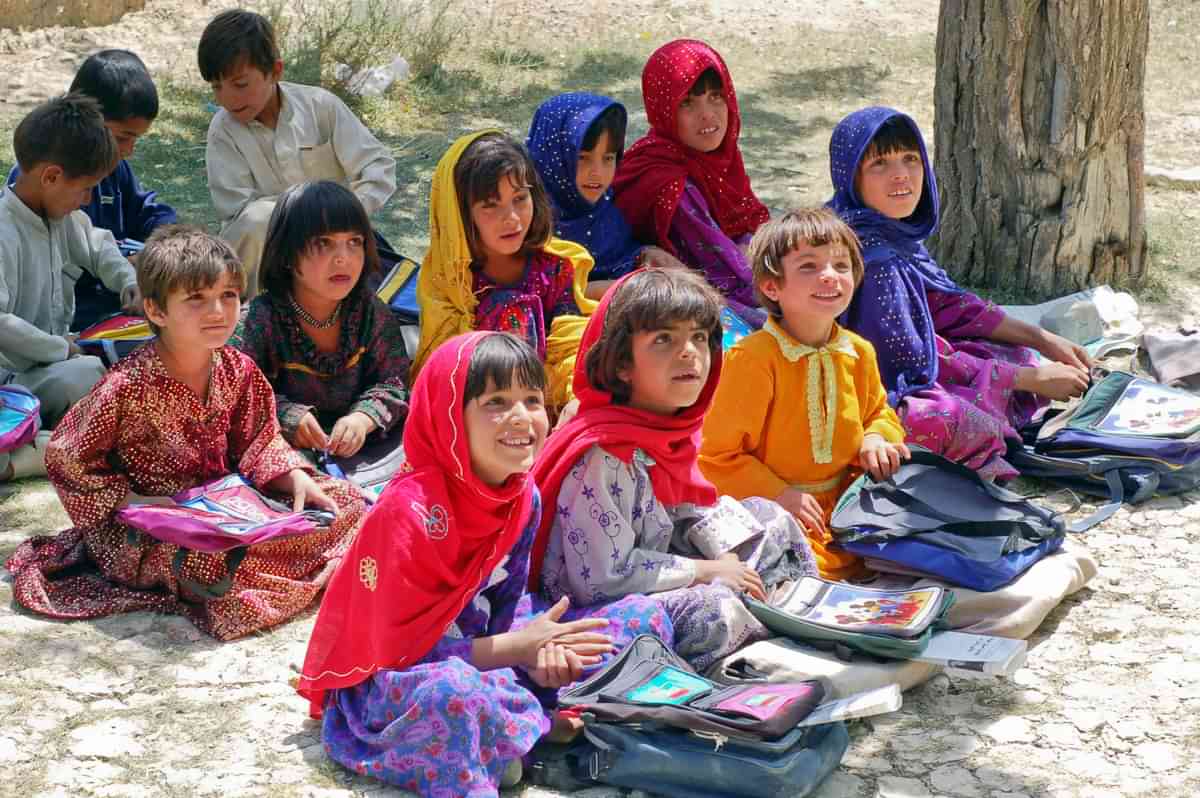


By Noman Shadab (23 August 2020)
Children in low-income countries (LICs) are particularly vulnerable and face many barriers to enrolling or completing primary education. Many of them do not learn at par with their privileged peers, even if they manage to enroll in school. Six out of 10 or 617 million adolescents globally do not acquire even the minimum levels in literacy.
It is predicted that across Southern and Central Asia 241 million (81%) of children and adolescents will not reach minimum proficiency in reading. Article 24 of the UN Convention of the Right of the Person with disabilities (UNCRPD, 2006) and the UN Sustainable Development Goal 4 (SDG4, 2015), among other normative frameworks, refer to equal education, free and quality education for all children. Due to children in LICs being out of school, women’s literacy rates in these counties are also at its lowest point.
In Afghanistan, 2.3 million or 40% of primary-school-age children, primarily girls, are out of school. Children in rural areas come from poor families so they have a lower rate of enrollment, and so repetition and drop out before completion are higher. Girls are vulnerable all over the country, particularly in remote areas. As a result, children in conflict and violent areas lack the essential skills and abilities to be the next generation of responsible citizens.
During the civil war among Mujahideen, and particularly during the Taliban era, schools and other educational facilities were destroyed. Since 2002, reconstruction programs for schools and educational infrastructure began once again, but the process was very slow and difficult because of the insecurity. Besides many newly constructed educational facilities continue to be under threat and inaccessible due to the risk of violence in remote areas. Children with disabilities and girls are those most affected.
Another important factor ailing education in the country is that most of the teachers lack adequate skills and abilities to accommodate students.
A crucial goal in conflict context: Quality education for all in Afghanistan
The framework for ‘education for all’ focuses on quality and equity in education. A considerable number of students are not enrolled in school in low-income counties, especially in an extended crisis context, such as Afghanistan. The ‘national education strategic plan of Afghanistan’ has indicated that the enrollment of children in primary schools will increase by18.9 % by 2021.
Access to learning and education in the country has been recognized as a means for sustainable development and building peace. Afghan national policies also support and promote quality and equal education in the country. A considerable effort has been made by the national government and international community to gather to address educational development and needs. Between 2001 and 2013, 14,600 new schools have been established, out of which 6100 are primary schools and 187,000 teachers have been hired, 70% of whom are primary school teachers.
The Ministry of Education (MoE) reports that out of 10.3 million school-age children, 8.3 million are now in school. The educational system in Afghanistan is growing by the day with the help of international partners, and schools are provided with textbooks, teacher guidelines, infrastructure, and other essential commodities. Today it is estimated that there are 215,000 teachers, 20 % whom are women.
At the village level, community-based education has helped in training teachers and sensitized communities to promote girls’ enrollment in schools in rural and remote areas, despite traditional beliefs. The efforts in this project have considerably reduced the gender gap in school enrollment as village-based schools provide an essential opportunity to promote and improve primary education in rural areas of Afghanistan.
Despite considerable progress in increasing the number of schools, students’ enrollment, and teachers, there are still vulnerable groups. For example girls, children with disabilities, and children living in rural areas are facing several challenges, and consequently, have a poor learning experience although a toolkit has been developed by UNESCO to address inclusion and quality in classrooms in Afghanistan.
The operationalization in primary schools has been reduced by NGOs due to the absence of concentrated strategy. A wide-range of corruption and nepotism also adversely impacts the education-system because of the absence of reliable and close monitoring mechanism of the performance of the education sector by the donors.
Corruption further cripples the investment in the educational system at multiple levels: school management, recruitment, and overall performance of the system. With the lack of transparency in the recruitment system, a study carried out by independent joint anti-corruption Monitoring and Evaluation Committee (MEC) indicates that new graduate teachers from TTCs Teacher Training College are often required to pay a bribe of 50,000 to 70,000 AFN, that is, worth more than a year salary to the government officials to get recruited in government-run schools.
New policies are needed to investigate and identify new initiatives to address the above-mentioned issues. There is an urgent need for improvements in Afghanistan’s educational system which has got corrupted and disorganized. New strategies and policies need to be developed by the Afghanistan government with the support of the international community for the education of the children.
(Noman Shadab is the Founder & CEO of The Student Magazine, Blogger, and Entrepreneur. Views expressed are personal.)